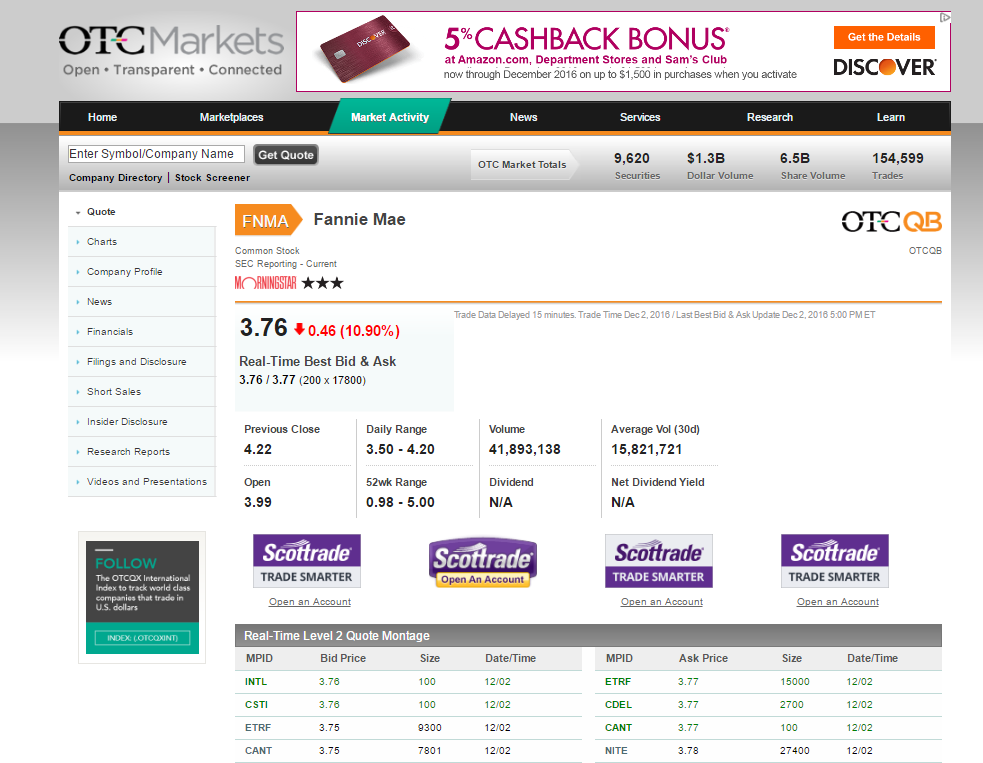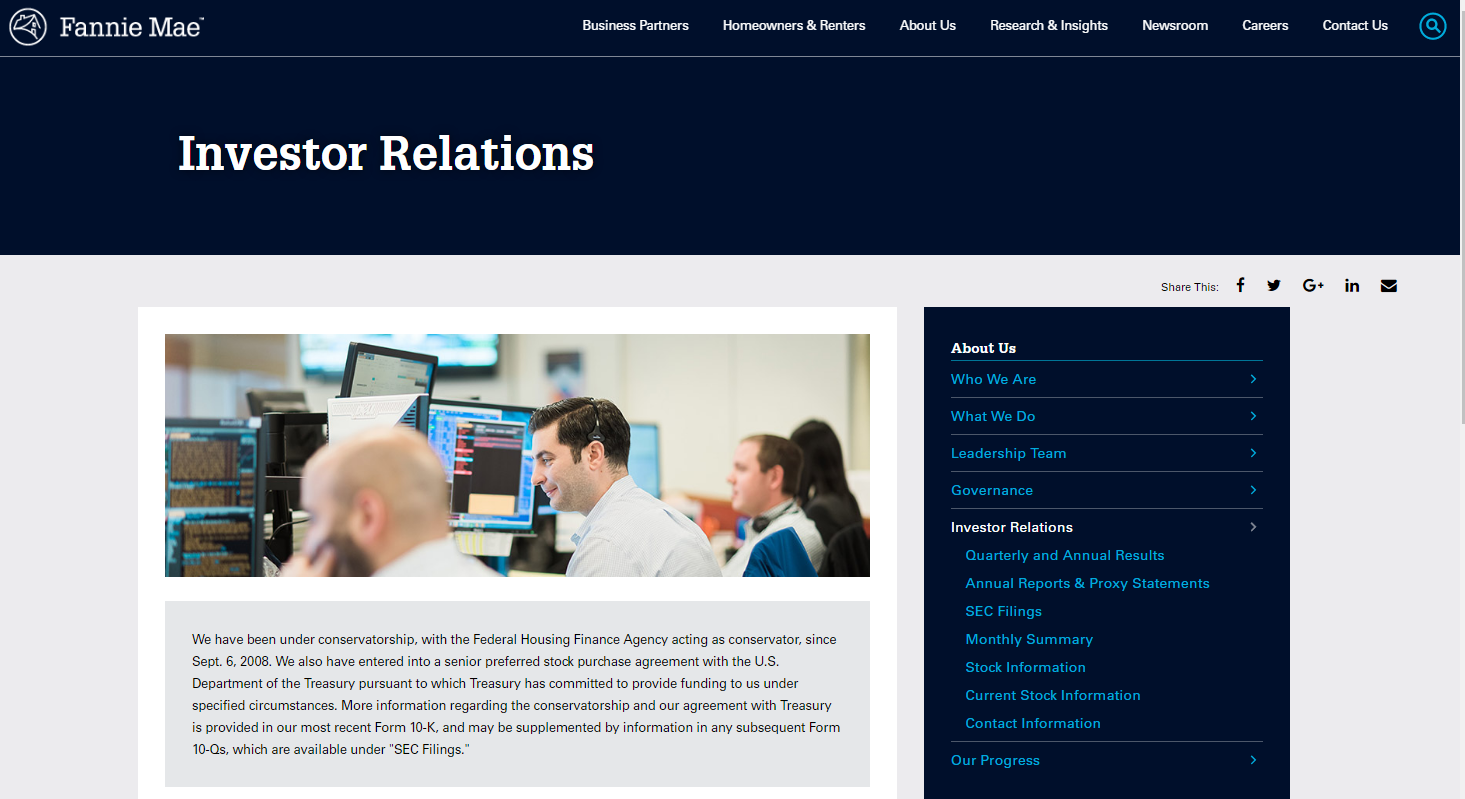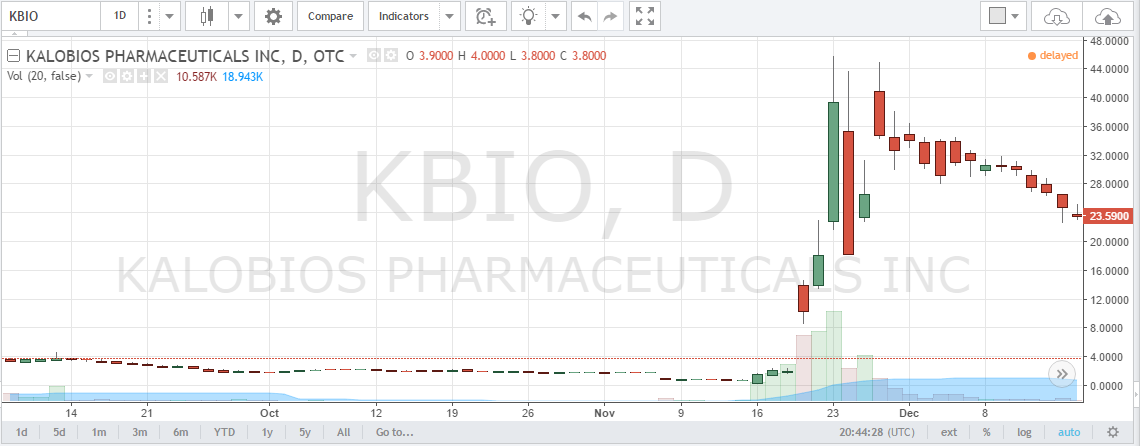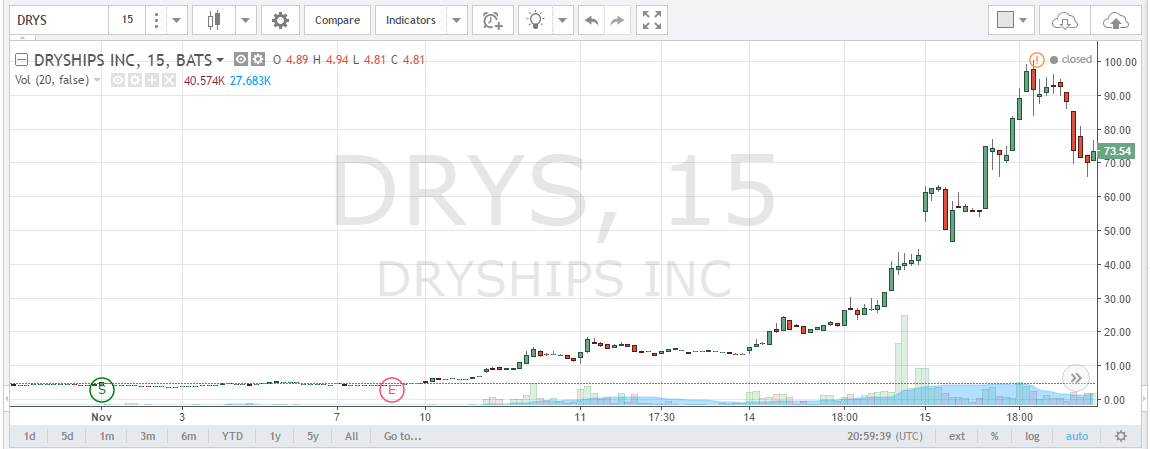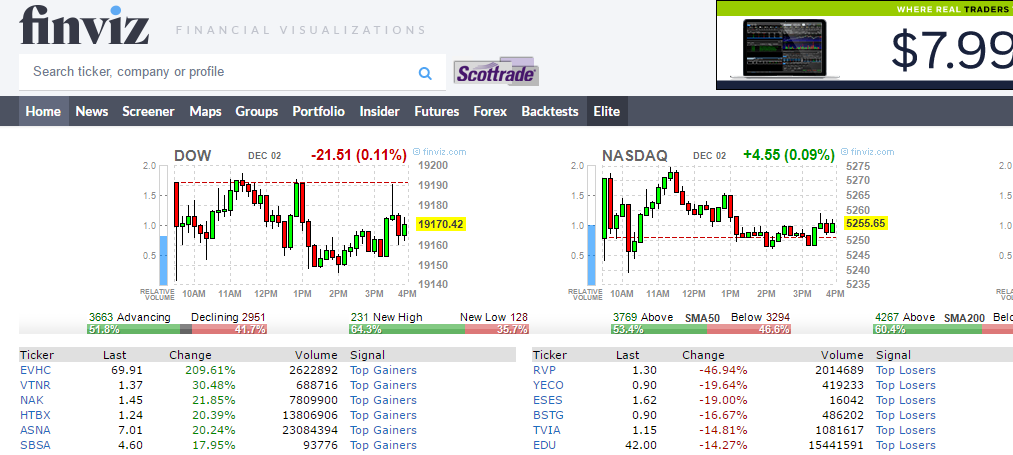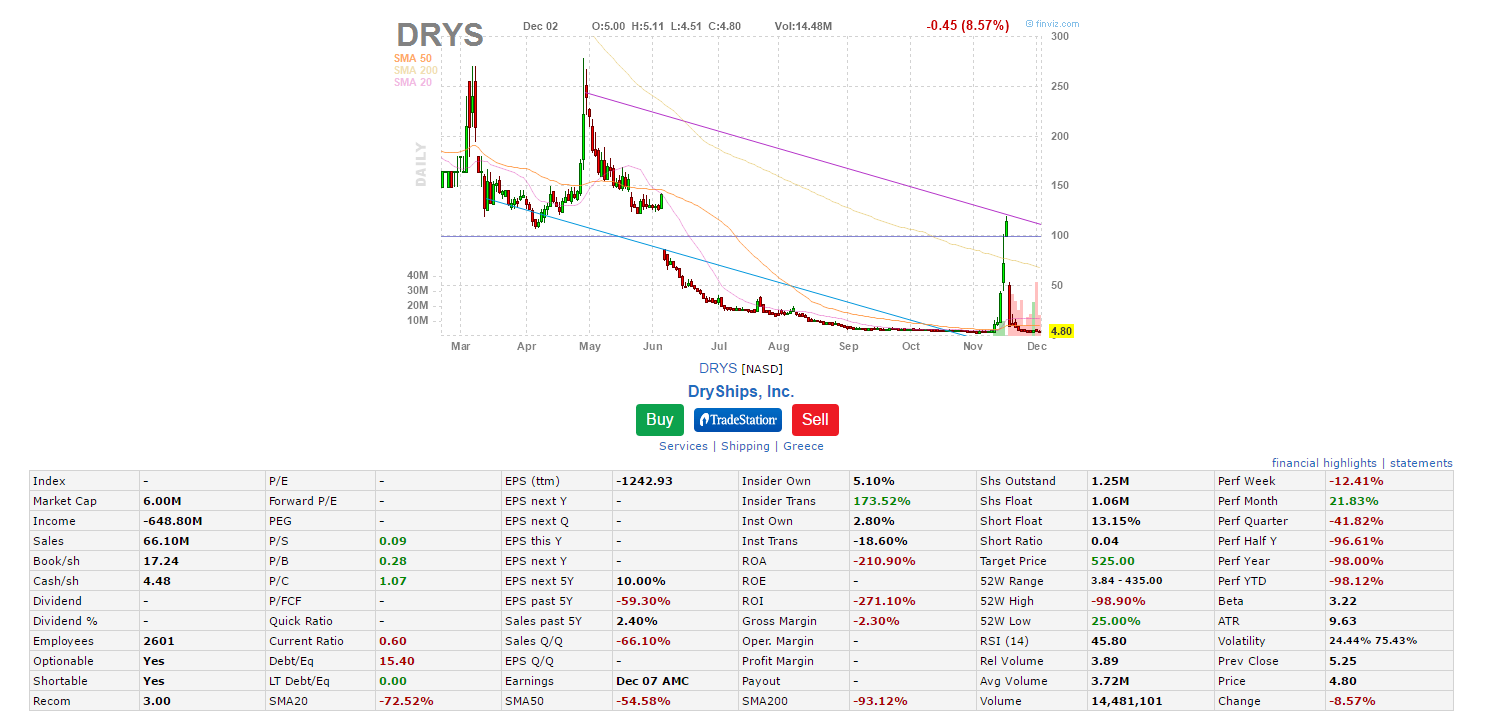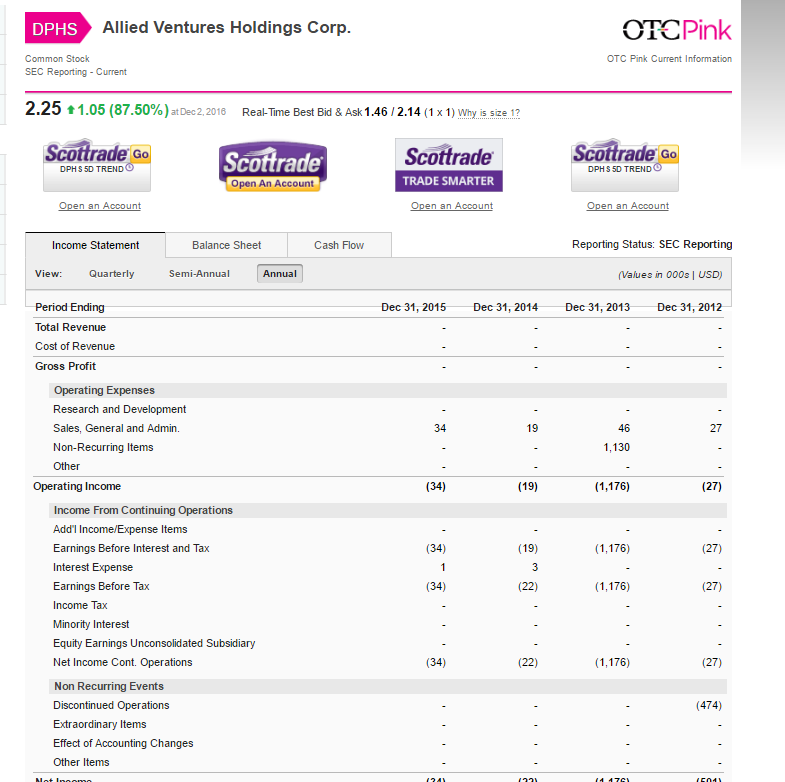The Penny Stocks Guide
There are two sides to penny stocks…one side paints them as a toxic investment vehicle aimed at manipulating the general public so a select few can profit. On the other hand, trading penny stocks offer an opportunity for small investors to get involved in the stock market and potentially make extraordinary returns on their money.
Which side should you believe?
The answer is simple. Both. You see, not all penny stock trading is based on defrauding investors and not all of them offer legitimate opportunities. First, let’s clear some key details pertaining to top penny stocks.
Now, according to the SEC, a penny stock generally refers to companies whose shares trade for $5 or less. Listen up, because this next part is very important. Some penny stocks are quoted over-the-counter. This means that you won’t find them trading on the Nasdaq or NYSE. Instead, they are traded on what is known as the OTC Bulletin Board (OTCBB) or OTC Link LLC.
>> Want To Skip This And Get To The Best Penny Stocks? Click Here To Join My Newsletter <<
There are some significant differences between hot penny stocks that trade on the securities exchanges and ones that trade over-the-counter.
In order to be listed on the Nasdaq, a company needs to meet specific requirements in a number of different categories. For example, they need to meet thresholds in:
- Income from continuing operations before income taxes: $1M
- Stockholders’ Equity: $15M to $30M
- Market Value of Listed Securities: $15M (income standard); $30M (equity standard)
- Market Value of Listed Securities: $75M
- Total Assets and Total Revenue: $75M & $75M
- Publicly Held Shares: 1.1.M
- Market Value of Publicly Held Shares: $8M to $20M
- Shareholders: 400
- Market Makers: 3-4
- Operating History: 2 years
In addition, they need to also meet financial and liquidity requirements.
- Stockholders’ Equity: $4M to $5M
- Market Value of Publicly Held shares: $5M to $15M
- Operating History: 2 years
- Market Value of Listed Securities: $50M
- Net Income from Continuing Operations: $750,000
- Publicly Held Shares: 1M
- Shareholders: 300
- Market Makers: 3
- Bid Price Or Closing Price: $4 and $3
Not to mention, there are some hefty fees associated with being listed, ranging from mid five figures to low six figures. They also have to adhere to very high standards of corporate governance.
Wonder What Penny Stocks To Invest In? Find Out Here
And that is just for the Nasdaq. The NYSE has it’s own specific requirements that are just as rigorous.
Moving on.
It’s a completely different picture when it comes to the requirements needed for a company to trade on the OTCBB.
Now here is where it can get a little scary.
There are no listing requirements that need to be met by an OTCBB issue.
There are zero financial requirements.
There are no shareholder approval rules.
OTCBB rules do not require issuers to establish or maintain an audit committee.
It’s more or less the wild west. Since the requirements needed are extremely loose, it’s not uncommon to find some rotten companies trading on the OTCBB.
Let’s leave ethics to the side for a moment and focus more on why all this stuff mentioned above is a problem. As a trader, you’d like to be informed as much as you’d like. For example, you might want to dig into a company’s financials or do some form of due diligence. Now, if a company is reluctant to be completely transparent, it becomes very difficult to fairly value it.
Without hard numbers, no credible bank or research group will cover the stock. And news from credible sources…well, all bets are off on how the stock price is going to behave. At the very least, it becomes vulnerable to rumors, “fake news”, and other forms of manipulation.
>> These Are The Hottest Penny Stocks That Will Dominate The Trump White House In 2017 <<
Bottom line, you need to be able to do due diligence on a stock — especially from a penny stock list. If a company is reluctant to disclose information needed to make trading decisions, stay away from those type of opportunities. Also, just because a company trades OTC, doesn’t automatically mean it’s a shady company. For example, some of largest foreign companies in the world trade OTC. Nobody thinks Adidas(ADDYY) as a shady company because they trade on the OTC.
It’s more or less companies that are reluctant to disclose key information, those are the ones that should probably be avoided when trading.
You’ve now been warned.
Moving on.
Now, here are some websites that are extremely useful when it’s time to do some research on a penny stock.
Let’s assume we were interested in learning more about Fannie Mae (FNMA), we could use www.otcmarkets.com to find a truck load of information pertaining to the company and it’s stock price. For example, you can find charts, the company profile, news, financials, filings and disclosure, short sales, insider disclosures and a whole lot more.
Another great place to look is the company’s website. Most company’s dedicate a section of their website to inform investors. For example, here is the one for Fannie Mae–
Generally, if a company is serious about attracting investors, they’ll put out a ton of information for investors sink their teeth into.
Another great resource is the Securities And Exchange Commission. More specifically, the EDGAR search. For example, if we wanted to know more about Fannie Mae and what they filed with the SEC, we could search that through EDGAR.
Now, some of penny stocks that trade on the Nasdaq or NYSE might have banks that research, but get comfortable rolling up your sleeves and doing your own due diligence.
One question you might be asking, “Is it even worth it?”
Well, the main reason why good penny stocks are so attractive on a trading perspective is that they offer a tremendous amount of opportunity.
In early November of 2015, a company by the name of KaloBios Pharmaceuticals Inc. (KBIO) was trading under $1 per share and on Nov. 13, the firm announced that they would be closing their doors. In essence making the stock worth $0.
(source: www.Tradingview.com)
However, the stock price kept creeping higher and higher. Some traders did not understand why a company destined to shut down it’s doors had an fair value whatsoever. Little did they know, that a group of investors, including Pharma Bro, Martin Shkreli were snapping up shares in hopes of reviving the company from the dead. While some traders were shorting, they were unaware until it was too late what the group lead by Shkreli were up to.
The stock price rocketed in a matter of days, in what was regarded by many traders “the trade of the year.” Those who took the ride for a long were paid out handsomely, while those who took the other side paid dearly.
(source: The Wall Street Journal)
Let’s face it folks, you’re not going to see those type of returns in such a short period of time trading Apple or Disney stock.
Of course, the above example is not the norm, but something that is definitely possible. Heck, only needs to go as far back as of November of 2016, where DryShips (DRYS), went from $2 to $100 per share in a couple weeks.
(source: www.TradingView.com)
Again, good luck trying to find these type of opportunities trading Starbucks and Microsoft.
Simply put, greater volatility creates greater opportunities. Think about it this way, imagine you go to the grocery store and you’re used to paying $1 for a specific item. You go back the following day and that item is now being sold for $1.25. Most likely, you’ll recognize that prices changed, you might not like it, but $0.25 is not going to really change your life. You’ll probably accept the new price without throwing a protest.
Now, getting back to the market, if the price of a stock goes from $1.00 to $1.25 in one day, that’s a 25% gain. Generally, those are the types of returns investors dream about having for an entire year. If Microsoft shares when up 25% in one day, you’d know about it. However, if some rinky dink penny stock moves up 25%, no one will likely care because of the low market cap.
Just take a look at the daily gainers and movers. For example, this a random Friday in December:
(source: www.Finviz.com)
As you can see, the majority of the top gainers and losers are penny stocks. And this happens all the time.
Here is another thing, most traders are lazy. Since a lot of top penny stocks are not covered by the big research departments on the street, the traders who put in the time and do their homework have a very good jump on the competition.
With that said, are penny stocks good for trading, or are they also good investments?
In respect to investing, the buy and hold strategy is probably not suitable for penny stocks. It’s like they say, most businesses fail. Buying and holding onto companies that are still trying to prove themselves doesn’t sound like investing, it sounds more like speculating. In order to get involved with penny stocks, you must have a high risk tolerance.
For example, KaloBios and DryShips’ stock price moves were largely attributed to supply and demand dynamics. There was a small float of outstanding shares, which caused epic short squeezes. As an investor, it’s difficult to be involved in a stock for the long term, knowing that your investment can be vulnerable to such market dynamics.
>> Access My Top 10 Penny Stocks For 2017 And Beyond. Sign Up Here <<
Simply put, the hot penny stocks make for better trading instruments than investment vehicles.
Of course, you must be fully aware of what you’re trading at all times.
The website Finviz.com does a great job of giving you a snapshot of a company’s profile.
For example:
As you can see, it’s not hard to find out the market cap, outstanding shares, percentage of the short float, average trading volume, volatility, ATR, performance and a whole lot more.
What should be your mindset when trading penny stocks?
Well, you should only be trading with money that you can afford to lose. Period. Trading penny stocks offers a ton of potential to make a lot of money. However, if you’re unsure of what you’re doing, you could end up losing badly. With that said, you must have a high tolerance for risk.
If you’re uncomfortable trading stocks that could move +/-10% or more on any given day, then you’re not ready to trade penny stocks. In that case, maybe it’s worth paper trading first, and try to really experience those swings (even though demo trading does pale in comparison to real money). Look, this is not for everyone, so if it doesn’t fit your risk tolerance, that’s O.K.
Only trade with money that you can afford to lose. And try not to put yourself in a position where you NEED to make money from trading in order to support yourself. You can never predict when the trade of the day, week or month will be, sometimes there isn’t a whole lot going on and opportunities are slim. If you need money from trading, you might force yourself to over trade and make costly mistakes.
Be patient and wait for your best set ups.
That’s pretty solid advice on the type of mindset you’ll need.
Also, you’ll want to set realistic expectations. For example, if you’re used to trading blue chip stocks and transitioning into penny stocks, some of those techniques might not carry over. In addition, you’ll be competing amongst some traders who dedicate their entire day to trading penny stocks. Don’t think you can just jump in and start crushing it. It may take some time, so be realistic, and understand that you’ll need to work hard at improving and getting better as a trader.
>> Skip The Learning Curve, Get My Top Penny Stock Picks For 2017 Now <<
There are some traders out there having five-figure and six-figure profit days from trading penny stocks. The rewards can match the effort that’s been put in.
How does one get started?
Believe it or not, it’s not that difficult. You see, nearly all of the retail brokers out there, give their customers an opportunity to trade penny stocks. Of course, that doesn’t mean they are all the same. With that said, you should research a broker before selecting one.
Some things to consider include:
- Minimum account size accepted
- Commissions and fees
- Ability to borrow shares to short
- How the trading platform works and if it’s fast and reliable
- Allow for pre-market and post-market trading
You should pick a broker based on your top needs and priorities.
And you know what else?
Trying to trade on your own is extremely difficult. With that said, you should probably team up with some like-minded people. Now, the best way to learn about trading penny stocks is to have a mentor, learn from them by watching them trade as well as pick their brain for ideas on how to get better.
Now, for a lot of folks, they don’t know anyone like that. However, the power of the internet has allowed us to connect with like-minded individuals from across the globe at speeds once thought unimaginable.
There are trading chat rooms, meet-up groups, newsletters, forums, email…you name it. Regardless of what you prefer, it’s important to be able to chat with other like-minded individuals who are pursuing similar trading goals.
After all, chances are someone will pick up on something that you might have missed during the trading day (or vice versa). In addition, you can collaborate on developing trading ideas, exchange thoughts on a particular trade and review past trades. That’s just the tip of the iceberg. In general, the overall communication probably has health and psychological benefits as well.
Should you give penny stock trading a shot?
Well, if you’ve got money that you can afford to lose and have an above average risk tolerance…why not?
Trading penny stocks could be like the wild wild west. But that is only if you want it to be. You see, not every penny stock is traded OTC. In fact, a decent amount of them trade on the NYSE and Nasdaq.
Now, that doesn’t mean that OTC is bad. However, the type of requirements needed to have a company to trade is very low. In fact, some companies refuse to disclose specific financial records pertaining to their business.
For example:
As you can see, the above financial statement is not very detailed. Which makes it hard to make a valuation…which makes it hard for market makers to quote prices…which creates liquidity issues.
But you know what?
That’s really on you if you want to gamble on stock you know little about.
Trading penny stocks offers a great opportunity for many because the barrier of entry is low. You don’t need a lot of money to get started compared to trying to trade large market cap stocks like Amazon, Facebook, Apple, and Google.
Because many of the companies have a small market cap and below average liquidity, there are less high frequency traders involved in penny stocks. Which is a benefit for us, because we are competing against another person, rather than a machine.
On the flip side, that’s one of the reasons why we see so many extraordinary moves in penny stocks. The classic emotional rollercoaster ride of fear and greed, plays out a lot in penny stocks.
Make no mistake about it. Some people trade penny stocks to try to make a quick buck. They’re more or less gambling. However, you want to be the informed trader, which includes making decisions based on your own due diligence, trading with a plan, and remaining focused on your goals.
Those people who are gambling, those are the ones who you’ll be taking their money from. It’s true that great fortunes can be made from trading penny stocks. However, it will not happen overnight… heck, it may never happen, if you don’t work hard, learn and try to improve.
The road to success is not an easy one. That’s why you’ll have a better chance of making it, if you team up with a mentor or find a group to exchange ideas with and help each other. Don’t think you can do all your research, trade, and keep a balanced life. You’ll need help along the way.
But in terms of opportunities…the volatility and potential for outsized returns make it one of the most attractive speculative plays in the market.
>> Join The Only Newsletter That Puts Your Trading Results Above Everything Else. Sign Up Now <<


